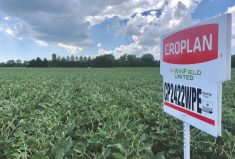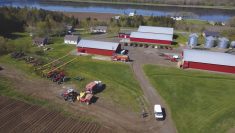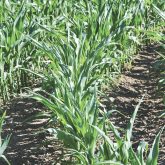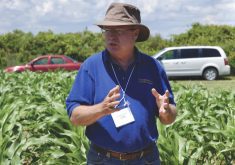A new Agriculture and Agri-Food Canada study suggests producers should take soil test nitrogen prescriptions by management zone with a grain of salt. They don’t necessarily reflect what researcher Alan Moulin calls the “supplying power” of the soil, and since fields vary, there’s no one-size-fits-all prescription to meet crop nutrient demands.
This doesn’t mean producers should stop using soil tests, says Moulin, a research scientist at the Brandon Research and Development Centre. But it does mean they should ask consulting agronomists to help tailor soil test recommendations for each field.
Read Also

Agronomists share tips for evaluating new crop products and tech: Pt. 3
With new products, new production practices and new technology converging on the agriculture industry at a frenetic pace in recent…
The study was funded by AAFC and the Canola Council of Canada with support from Manitoba Agriculture and run by producers in co-operation with Farming Smarter, the Northeast Agricultural Research Foundation, and the Deerwood Soil and Water Management Association.
Researchers looked at how canola yield responded to variable-rate nitrogen by management zone in field trials in Saskatchewan and Manitoba between 2014 and 2017.
“Simply put, the objective of the study was to assess fertilizer response of canola in the context of historical yield patterns in a field,” says Moulin, who co-led the study with economics specialist Mohammad Khakbazan.
“The innovative part of this research was that we worked with producers who had yield maps for their fields accumulated for three to five years before the study started. We based our study’s design on that historical variability so we could assess the yield response of fertilizer in the context of the spatial variability of that canola yield.”
Data was collected from zones in 26 fields which were broken up into high-, average- and low-producing areas. Soil testing (for nitrogen, phosphorus, potassium and sulphur) was completed for each zone, after which researchers set up fertilizer strips at rates of zero, 50, 100 and 150 per cent of recommended soil test N, with suitable levels of P, K and S.
Estimated canola yields and net revenue were calculated and analyzed for each year and location, and compared to control fields with uniform N application. The researchers also mapped terrain attributes, slope positions, vertical and horizontal curvature, and catchment zones using GIS software.
Economic implications
“We wanted to capture the extremes,” Moulin explains. “Our expectation was that in high-producing areas we could get a higher yield response with more N. And we thought additional fertilizer might improve yield in low-producing areas. That was our hypothesis, based on the analysis of historical yield patterns.”
But the researchers found N response varied more than expected. Yields in only a few cases responded to both high and low rates. However, when data were combined from management zones over eight fields, N fertilizer did increase overall canola yield and net revenue.
Total acres in the high-producing zones over eight fields generated on average $67 more net revenue than control fields under uniform N management, but low-producing zones $61 less.
The researchers were surprised by the disappointing yield response in the low- and average-producing areas. Moulin says one reason is that soil tests may not accurately reflect soil N supply — N buildup in soil organic matter often becomes available during the growing season.
Khakbazan believes soil tests generally call for over-application of N. “The problem was basically when we divided fields into high-, low- and average-producing zones,” he says. “Based on 100 per cent soil test recommendations, even at the low-producing zones 87 kg/ha of nitrogen was applied. In my opinion, this is still a high rate. If soil N is already high, you don’t see the benefit of applying N in low- or medium-producing zones.”
The implication is that the cost of higher rates of nitrogen in different zones does not represent a benefit to the producer. “Dividing fields into zones increased yields, but not enough to cover the cost of higher nitrogen application,” Khakbazan says.
Moulin says this is where agronomists and consultants come in. “No field is the same as other fields — they all have a different history, terrain attributes and yield patterns. This all represents a very complex equation in terms of solving for the optimum N fertilizer. It points out the need for consulting agronomists, particularly those with precision ag experience, who can assess those yield and terrain attributes and develop a customized solution for producers.”
Moulin says more studies are on the way, which should mean more precise variable-rate recommendations down the road.
Brandon Research Centre scientist Taras Lychuk is collaborating with Moulin on a new study using ArcAPEX modelling to analyze fields in Western Canada and develop best management practices to reduce edge-of-field N and P losses, improve crop yield and manage soil organic carbon.
“The overall prediction for Canada is that it will be warmer and precipitation will change, so we’re going to see which field operations or crop rotations are going to work better in the future, how field zones will behave and whether they will stay the same, or whether we can make changes,” Lychuk says.
Khakbazan has received funding to further research on management productivity zones in Manitoba’s risk areas for wheat and canola, with the goal of assessing whether variable-rate N shows an economic benefit for producers.
















